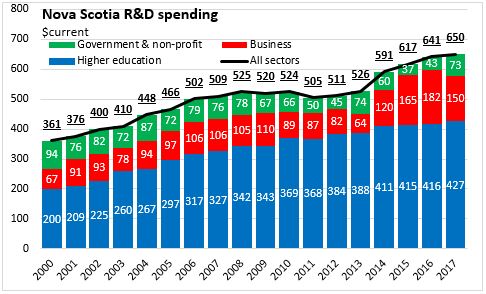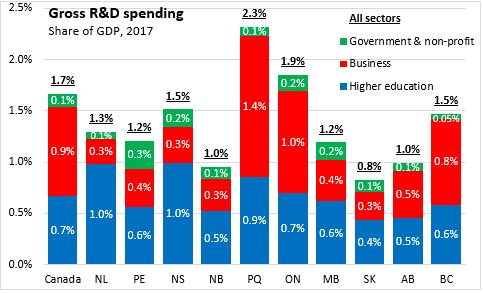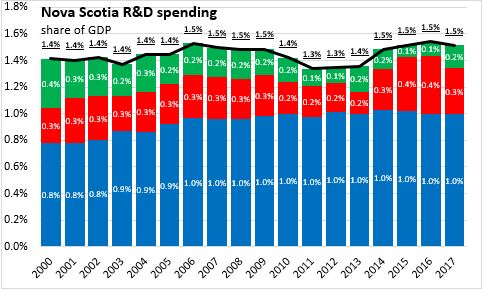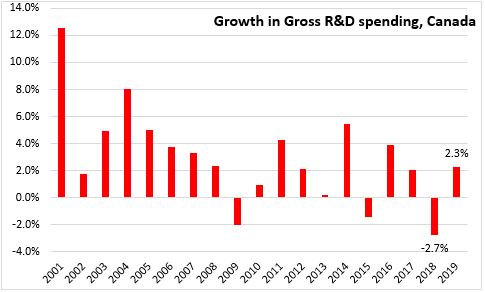The Economics and Statistics Division maintains archives of previous publications for accountability purposes, but makes no updates to keep these documents current with the latest data revisions from Statistics Canada. As a result, information in older documents may not be accurate. Please exercise caution when referring to older documents. For the latest information and historical data, please contact the individual listed to the right.
<--- Return to Archive
For additional information relating to this article, please contact:
January 30, 2020RESEARCH AND DEVELOPMENT SPENDING INTENTIONS (2019) AND ACTUAL (2017) Today, Statistics Canada released gross domestic expenditures on research and development, for actual spending in 2017 at the provincial level as well as 2018 (preliminary) and 2019 (intentions) at national level.
Characteristics of research and development spending, 2017 (actual)
Nova Scotia's R&D spending in 2017 was $650 million for all sectors, an increase of 1.4 per cent from 2016. Nova Scotia accounted for 1.8 per cent of Canada's R&D though its economy was 2.0 per cent of the national total.

In 2017, the three largest provinces continued to account for the bulk of R&D spending in Canada. Ontario accounted for 42.9 per cent of Canada's R&D in 2017 with the business enterprise sector in the province accounting for more than half of expenditures in the province. Quebec accounted for 27.2 per cent of national R&D while British Columbia represented 11.7 per cent.
As a share of gross domestic product (GDP), R&D expenditures were largest in Quebec at 2.3 per cent and Ontario at 1.9 per cent. Nova Scotia R&D as a percentage of GDP was 1.5 per cent in 2017, the third highest among the provinces. Provincial R&D spending was lowest as a share of GDP in Saskatchewan, New Brunswick and Alberta.
Nationally, 1.7 per cent of Canada's GDP is spent on R&D - a lower share than in many other OECD nations (US, Japan, Germany). Canada is among the largest funders of higher education R&D among OECD nations.

Nova Scotia's R&D as a share of GDP increased in each year from 2011 to 2016 before declining in 2017. There was a fall in business R&D expenditures in 2017, which are influenced by offshore exploration activities. Higher education R&D spending has been stable around 1.0 per cent of GDP (the highest in Canada) for over a decade. Nova Scotia's government/non-profit R&D spending increased in 2017, partially offsetting the decline in business R&D spending.

National spending on research and development, 2019 (intentions)
Canada's expenditures on research and development (R&D) declined 2.7 per cent in 2018 to $34.8 billion. The intentions for 2019 are for a partial rebound of 2.3 per cent to $35.5 billion, which is still below the 2017 peak of 35.7 billion. Canada's R&D spending intentions are up for all sectors in 2019: higher education, business and government/non-profit.

Source: Statistics Canada. Table 27-10-0273-01 Gross domestic expenditures on research and development, by science type and by funder and performer sector (x 1,000,000); Table 36-10-0222-01 Gross domestic product, expenditure-based, provincial and territorial, annual (x 1,000,000)
<--- Return to Archive